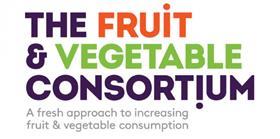
Australian horticulture industry groups have teamed up with health professionals to launch the Fruit & Vegetable Consortium.
The group was formed earlier this year with the mandate of collectively advocating for comprehensive action to address “Australia’s complacency about eating fruits and vegetables”.
“The Fruit & Vegetable Consortium was formed in response to the alarmingly low rates of fruit and vegetable consumption in Australia. Just half of Australian adults – and two-thirds of children – have an adequate daily intake of fruit,” according to a release from the consortium.
“When it comes to vegetables, Australians fall alarmingly short of the recommended daily intake, with just seven per cent of Australian adults and five per cent of children meeting the recommended guideline for daily vegetable intake.”
Over 50 organisations have pledged their support to the Fruit & Vegetable Consortium, which launched to industry four weeks ago.
Nutrition Australia chief executive Lucinda Hancock has been appointed as chair of the consortium. Other founding members include Ausveg, the Cancer Council of Victoria, Heart Foundation, the Institute for Physical Activity and Nutrition, Melbourne Market, Nutrition Australia, Stephanie Alexander Kitchen Garden Foundation, the Good Foundation, Produce Marketing Association Australia-New Zealand and VicHealth.
For its first major project, the consortium is developing a business case and prospectus for potential funders, including government, retailers and other interested sectors. The business case will outline the investment needed for a sustained, comprehensive behavioural change campaign for increasing vegetable consumption.
Hancock said lifting fruit and vegetable consumption is not only a critical step to improving the nutrition and health of the Australian public, but also a sure safe way to reduce government expenditure.
“Diets rich in fruits and vegetables have been shown to protect against high blood pressure, obesity, heart disease, stroke, type two diabetes and some cancers,” explained Hancock.
“The job of increasing fruit and vegetable consumption is too much for a single person or organisation. This consortium was born out of a common imperative to increase fruit and vegetable consumption with the aim of improving health outcomes for Australians and their families.”
James Whiteside, chief executive of peak industry body Ausveg, said it was important for growers to work with health professionals, researchers and other organisations to develop and promote programmes to change consumer behaviour.
“Growers are deeply committed to increasing vegetable consumption among Australians of all ages and are keen to work alongside the food and health industries to improve the health and wellbeing of Australian men, women and children,” said Whiteside.
“If every Australian ate an additional half a cup of vegetables per day, government health expenditure would reduce by an estimated A$100m per year (A$60.7m to the Commonwealth Government and A$39.2m to states and territories).”



